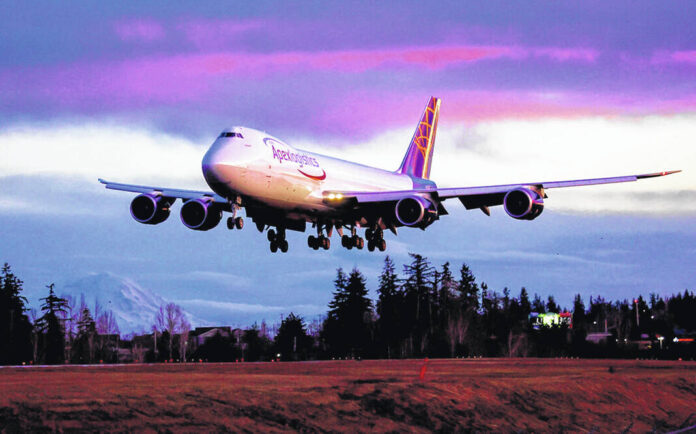SEATTLE — Boeing bids farewell to an icon on Tuesday: It’s delivering its final 747 jumbo jet.
Since its first flight in 1969, the giant yet graceful 747 has served as a cargo plane, a commercial aircraft capable of carrying nearly 500 passengers, a transport for NASA’s space shuttles, and the Air Force One presidential aircraft. It revolutionized travel, connecting international cities that had never before had direct routes and helping democratize passenger flight.
But over about the past 15 years, Boeing and its European rival Airbus have introduced more profitable and fuel efficient wide-body planes, with only two engines to maintain instead of the 747′s four. The final plane is the 1,574th built by Boeing in the Puget Sound region of Washington state.
A big crowd of current and former Boeing workers is expected for the final send-off. The last one is being delivered to cargo carrier Atlas Air.
“If you love this business, you’ve been dreading this moment,” said longtime aviation analyst Richard Aboulafia. “Nobody wants a four-engine airliner anymore, but that doesn’t erase the tremendous contribution the aircraft made to the development of the industry or its remarkable legacy.”
Boeing set out to build the 747 after losing a contract for a huge military transport, the C-5A. The idea was to take advantage of the new engines developed for the transport — high-bypass turbofan engines, which burned less fuel by passing air around the engine core, enabling a farther flight range — and to use them for a newly imagined civilian aircraft.
It took more than 50,000 Boeing workers less than 16 months to churn out the first 747 — a Herculean effort that earned them the nickname, “The Incredibles.” The jumbo jet’s production required the construction of a massive factory in Everett, north of Seattle — the world’s largest building by volume.
Among those in attendance on Tuesday was Desi Evans, 92, who joined Boeing at its factory in Renton, south of Seattle, in 1957 and went on to spend 38 years at the company before retiring. One day in 1967, his boss told him he’d be joining the 747 program in Everett — the next morning.
“They told me, ‘Wear rubber boots, a hard hat and dress warm, because it’s a sea of mud,’” Evans recalled. “And it was — they were getting ready for the erection of the factory.”
He was assigned as a supervisor to help figure out how the interior of the passenger cabin would be installed and later oversaw crews that worked on sealing and painting the planes.
“When that very first 747 rolled out, it was an incredible time,” he said as he stood before the last plane, parked outside the factory. “You felt elated — like you’re making history. You’re part of something big, and it’s still big, even if this is the last one.”
The plane’s fuselage was 225 feet long and the tail stood as tall as a six-story building. The plane’s design included a second deck extending from the cockpit back over the first third of the plane, giving it a distinctive hump and inspiring a nickname, the Whale. More romantically, the 747 became known as the Queen of the Skies.
Some airlines turned the second deck into a first-class cocktail lounge, while even the lower deck sometimes featured lounges or even a piano bar. One decommissioned 747, originally built for Singapore Airlines in 1976, has been converted into a 33-room hotel near the airport in Stockholm.
Delta was the last U.S. airline to use the 747 for passenger flights, which ended in 2017, although some other international carriers continue to fly it, including the German airline Lufthansa.
Atlas Air ordered four 747-8 freighters early last year, with the final one leaving the factory Tuesday.







